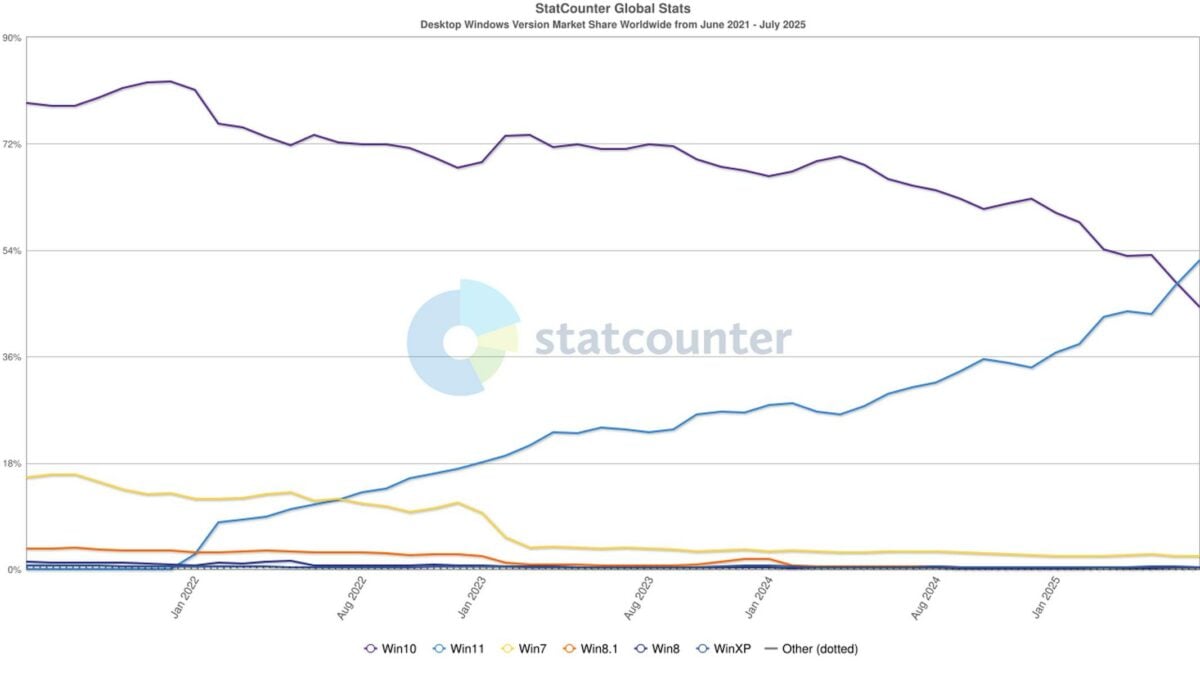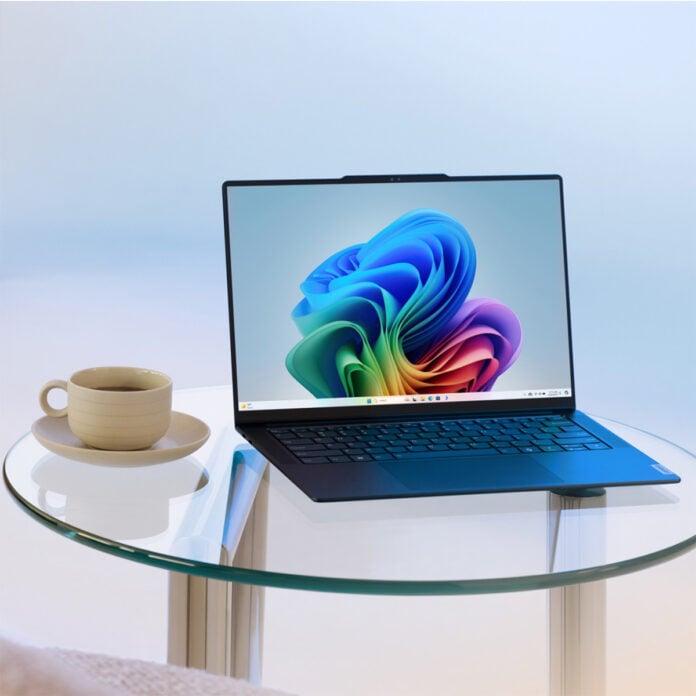Windows 11 has at last managed to claim enough market share to beat Windows 10 for the first time. Microsoft’s latest operating system is now powering more than half of Windows-based desktops, marking a shift in user preference. Whether due to the impending sunset of Windows 10 or the improvements brought by Microsoft, Windows 11 adoption will likely only go up from now on.
As of July 2025, Windows 11 accounts for 52.19% of the Windows install base on desktop, according to StatCounter. Second place unsurprisingly now belongs to the beloved Windows 10, which just lost its spot to its younger sibling. That said, Windows 10 is still holding a lot of ground, with 44.48% of desktop machines under its belt. The soon-to-be 16-year-old Windows 7 sits in third place with 2.28%.
Released on 5 October 2021, Windows 11 has struggled to attract new and old users alike. The operating system enjoyed a mere 15% of market share during its debut year, likely in part due to its hardware requirements, namely TPM 2.0. The OS continued to climb in the following years, reaching 26% by the end of 2023 and 34% by the end of 2024. In the end, Windows 11 took 3 years and 9 months to finally overtake Windows 10. Microsoft CEO Satya Nadella has noted that commercial adoption of Windows 11 jumped by nearly 75% year‑over‑year in early 2025.

Considering the company’s claim of over 1.4 billion monthly active devices running Windows, Windows 11 should be powering no less than 700 million machines as we talk. This trend should continue as Windows 10 approaches its end of life, scheduled for October 14, 2025. That said, due to the recent change which provided a free opportunity for Windows 10 users to get another year of free security updates, Windows 11 adoption may slow a bit before going full steam ahead next year.
Despite its growing popularity, Windows 11 remains a controversial release. It marks the first operating system to require a Microsoft account, sans any workarounds. The OS also leaves older hardware by the wayside owing to its TPM 2.0 requirement. That’s not forgetting the proliferation of ads and pre-installed ‘bloatware’ compared to the relatively unencumbered and frictionless Windows 10.
Fortunately, Microsoft has started to wake from its slumber, now working on multiple ways to improve the user experience and performance, especially for gamers. The company has even released a new major update to its Insider program, hinting that the OS will remain its focus for at least another year before turning attention toward the next iteration, commonly referred to as Windows 12.


